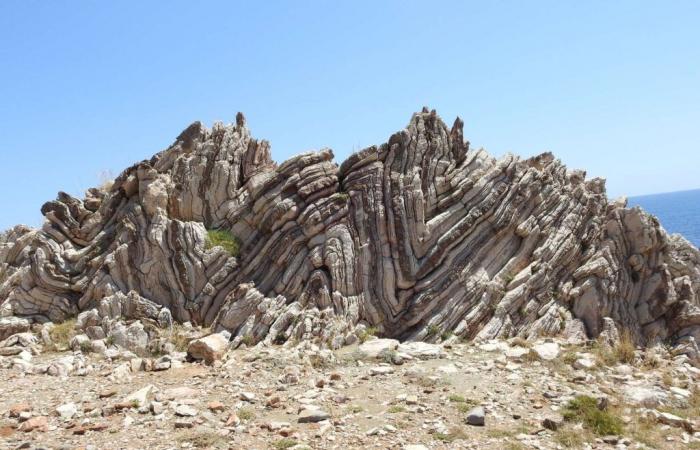The landscapes that surround us can be flat or steep, they are always the result of a long tectonic history. Born several billion years ago, the continents have in fact never stopped moving, carried away by the movementmovement tectonic plates. Through collisions or, on the contrary, through their fragmentation, the continents have experienced multiple episodes of deformation which, by juxtaposing one another over time, have given rise to the reliefs that we observe today. This deformation, the legacy of a complex tectonic history, is often invisible to us, masked by vegetation or human infrastructure. However, if you look closely, you see it almost everywhere.
Mountain ranges demonstrate the power of tectonic forces
Mountain ranges, with their steep and bare slopes, frequently reveal very tortuous patterns. In the Alps in particular, the formidable constraints which led to the formation of this mountain range produced gigantic folds. The white strata of limestone, originally deposited horizontally at the bottom of an ocean, are today uplifted and totally deformed.
The power of the collision between Africa and Europe achieved the feat of transporting these gigantic massesmasses of rocks at altitudes of several thousand meters and folding them on themselves! It is the same, of course, in all massifs of tectonic origin.
In this distortion, we can read a story of several tens of millions of years. Because folding sedimentary strata back on themselves takes time. By observing this deformation, we can reconstruct the entire history of a place, going back to the deposition of the sediments which today make up these folded strata. From the ocean to the mountain range, then from the mountain range to the ocean.
The major tectonic cycles
In fact, the plate tectonicsplate tectonicsit’s not just a matter of collision. If the continents come together, it is in fact only to separate, a few hundred million years later.
Evidence of past continental openings, however, is often more discreet than evidence of collisions. To find them, we must deconstruct the more recent compressive history. But the clues are there, even at the summit of Mont Blanc! It is the work of geologistsgeologists than knowing how to identify them, read them and reconstruct a coherent story that extends over time.
How do Alpine ophiolites tell us about ocean opening?






